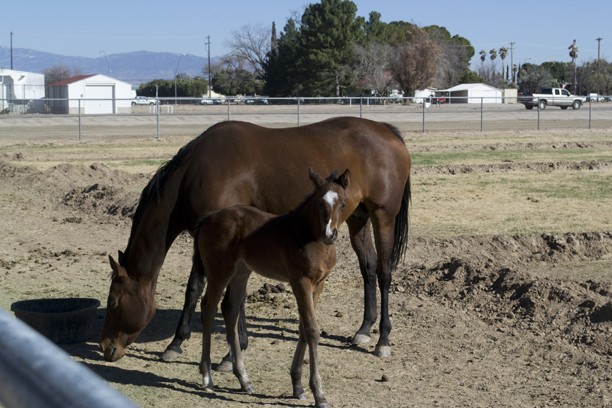The UA College of Agriculture and Life Sciences has high hopes for a future veterinary program.
The Dean of the College of Agriculture and Life Sciences, Shane Burgess, has taken a program proposal for a new veterinary program to the governor and Legislature for authorization. His initial $3 million budget was approved by the Arizona Board of Regents last year but failed to be included in Gov. Jan Brewer’s 2013-2014 budget request.
However, Burgess said he has not given up yet as he plans to keep working to get aid from the state this year by presenting modified plans and budgets to the Legislature.
“If everything goes perfectly and we get the funding that we need and we start [planning] July 1, we would be accepting students to their first year of the program in August of 2015,” Burgess said.
No public college in the state of Arizona currently offers a veterinary program. While there is no national shortage of companion animal vets, there is a need for large-animal vets and vets in the public heath, disease research and food safety industries, which would be the main focuses of the UA’s new school.
This is not the first time the UA has tried to create a veterinary college. In 2009, the then Dean of the College of Agriculture and Life Sciences, Eugene Sander, proposed a plan for a separate School of Animal, Veterinary, and Microbiological Sciences but was denied.
One of the reasons the school has not been approved is due to the economy of the state, according to Charles Sterling, professor and head of the Veterinary Science and Microbiology department. A program of this stature can cost millions of dollars and without strong support from the legislature and state funding, the school has not been able to jump start the program.
“Now at this point and time the funding hasn’t been identified,” Sterling said. “Is it something that, you know, we’re going to give up on or anything like that? Absolutely not.”
Burgess’s plan is to cater the new veterinary program to well-qualified students that arise from the first-year program in the new School of Animal and Comparative Biomedical Sciences at the UA. The selected students would then begin a year-round veterinary program that would allow them to earn a Doctor of Veterinary Medicine degree in a combined four years.
“Important to that new model is the concept that, number one we can give vet students just as good of training as if they went to a regular school, they can get through quicker. And in the process, they won’t incur the heavy debt load that most students do when they come out of a traditional four year undergraduate, four year vet school,” Sterling said.
This model of veterinary school does not currently exist in the U.S., with other schools requiring a four-year undergraduate and then four-year graduate program to become a veterinarian. Burgess said he believes that his new model for the program can set the university above other colleges in the nation and give it a leg up on the competition when recruiting students.
“It’s not just about a vet school for our state, its about genuinely revolutionizing training for veterinarians in the country,” Burgess said. “Our plan is to decrease the time it takes to get a veterinary degree by half and to make the cost half, or in some cases close to a third of the cost, that an Arizonan would be paying.”
Many aspiring Arizona veterinary students have to leave the state for schooling because of the lack of in-state programs and most who leave never return after they finish their schooling, Burgess said.
“I think it would attract a lot more students to come here because I know people that were interested in going to vet school that decided not to go to U of A because U of A doesn’t have a vet school,” said Kaitlin Dickson, an animal science freshman. “I think it can bring more attention to the university.”
Sterling said he will continue to pursue his goal of creating a veterinary school and feels that they are moving in the right direction.
“We’re still creating this new school, so no matter what, our undergrad students will benefit from the new opportunities afforded by program development in the new school.”









